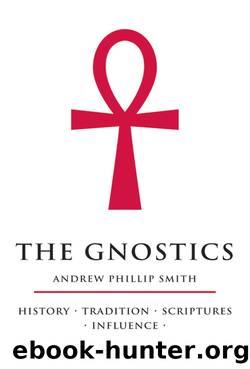The Gnostics by Andrew Phillip Smith

Author:Andrew Phillip Smith
Language: eng
Format: epub
Tags: Gnostics, The
ISBN: 9781780284644
Publisher: Duncan Baird Publishers Limited
Published: 2009-09-27T00:00:00+00:00
CHAPTER 7
LIGHT AND DARKNESS: THE MANICHAEANS
Perhaps it was in the nature of the ancient Gnostics â the Valentinians, Sethians and others â to fade away so rapidly and to remain minority groups. Although there are reports of Valentinians surviving up to the eighth century, the classical Gnostics diminished in numbers and influence from the fourth century. Gradually, texts were no longer copied, Valentinians were no longer present at church services, or interpreting the gospel teachings esoterically and offering a higher level of spiritual (pneumatic) experience than the conventional religion of mere psychic Christians.
It was perhaps the very lack of dogma and the low degree of organization and political power in Gnostic groups that prevented them from spreading widely and becoming a large-scale religion. Marcionism, Gnosticism without gnosis, thrived as a religion but eventually lost out to mainstream Christianity. As a result, Gnostic teachings have perennially been perceived as heretical versions of mainstream Christianity, or sometimes of other religions. The ancient Gnostics, the Cathars and the Bogomils were all considered by Christians to be Christian heresies â that is, they were thought to have originated in mainstream Christianity but had perverted the teaching of Christ and the Church, whether by their own misunderstandings or through the devilâs influence.
Even the single branch of Gnostic teaching that truly became a religion on a larger scale, even a world religion, was claimed by Christians as a heresy of their own religion. This was Manichaeanism, the religion of light, a dualist religion with a mythology that is immediately reminiscent of older Gnostic mythologies. Evidence of Manichaeanism exists as far west as Spain and as far east as China, from the third century to, if only in the vaguest traces, the twenty-first.
Manichaeanism developed in Syria and spread principally eastward, but it was not limited to the Near East, and Manichaeans became the bugbears of medieval Western Christianity. Even more than the term âGnosticâ, âManichaeanâ became synonymous with world-hating dualism. More recently it has come to refer to any extreme black-and-white viewpoint, and US president George Bush Jr has been accused of having a Manichaean vision since the 9/11 attacks. One cannot imagine that the peace-loving and spiritual Manichaeans would have been pleased with the comparison.
Manichaeanism was named after its third-century founder, Mani. It is quite easy to put together a short biography of Maniâs life, but it should be remembered that much of the source material is legendary, mythical or hagiographical. This is a problem for writers of history but a pleasure for lovers of esoteric scripture. For instance, Mani was contacted by his divine twin or light-self when he was aged 12. This was surely inspired by Lukeâs story of Jesus in the Temple at the same age (12 being a significant number in many ancient traditions).
Mani was born on 14 April 216 CE near the Persian capital city Seleucia-Ctesiphon. His mother, Maryam or Mary (which name may be authentic, but again suggests that the story may be fashioned somewhat after the childhood story of
Download
This site does not store any files on its server. We only index and link to content provided by other sites. Please contact the content providers to delete copyright contents if any and email us, we'll remove relevant links or contents immediately.
The Hatha Yoga Pradipika (Translated) by Svatmarama(2497)
Real Sex by Lauren F. Winner(2480)
The Holy Spirit by Billy Graham(2425)
The Secret Power of Speaking God's Word by Joyce Meyer(2257)
The Gnostic Gospels by Pagels Elaine(2033)
Devil, The by Almond Philip C(1906)
23:27 by H. L. Roberts(1895)
Jesus by Paul Johnson(1892)
The Nativity by Geza Vermes(1853)
All Things New by John Eldredge(1786)
Chosen by God by R. C. Sproul(1766)
Angels of God: The Bible, the Church and the Heavenly Hosts by Mike Aquilina(1630)
The Return of the Gods by Erich von Daniken(1578)
Angels by Billy Graham(1555)
Evidence of the Afterlife by Jeffrey Long(1462)
Knowing God by J.I. Packer(1436)
The Gnostic Gospel of St. Thomas by Tau Malachi(1414)
Victorian Sensation by James A. Secord(1410)
How To Be Born Again by Billy Graham(1407)
